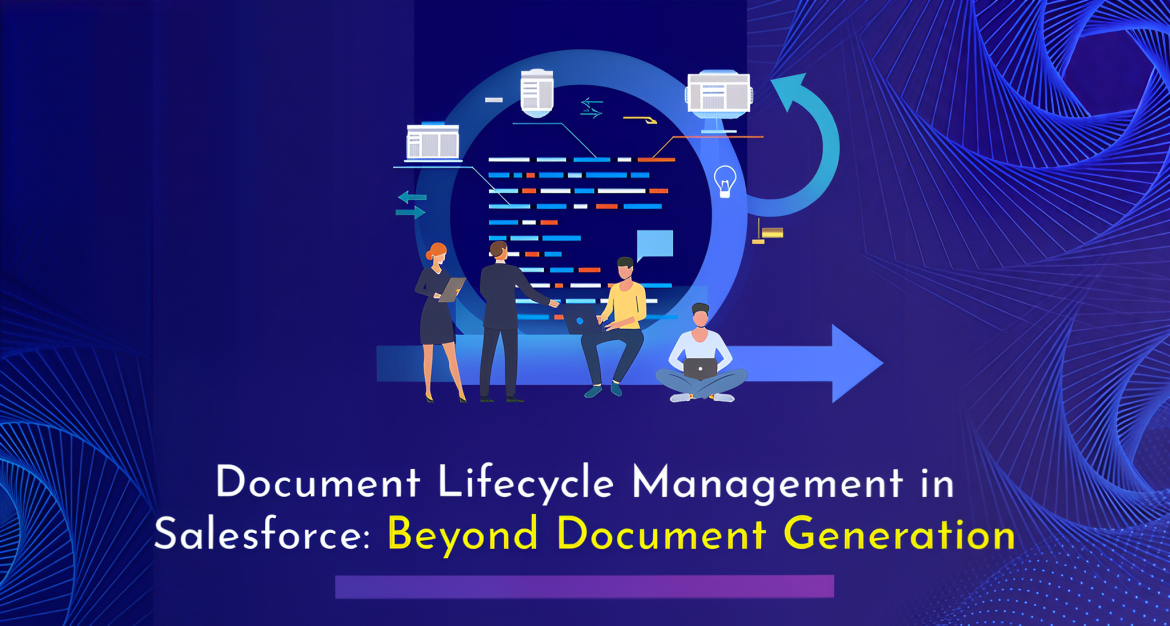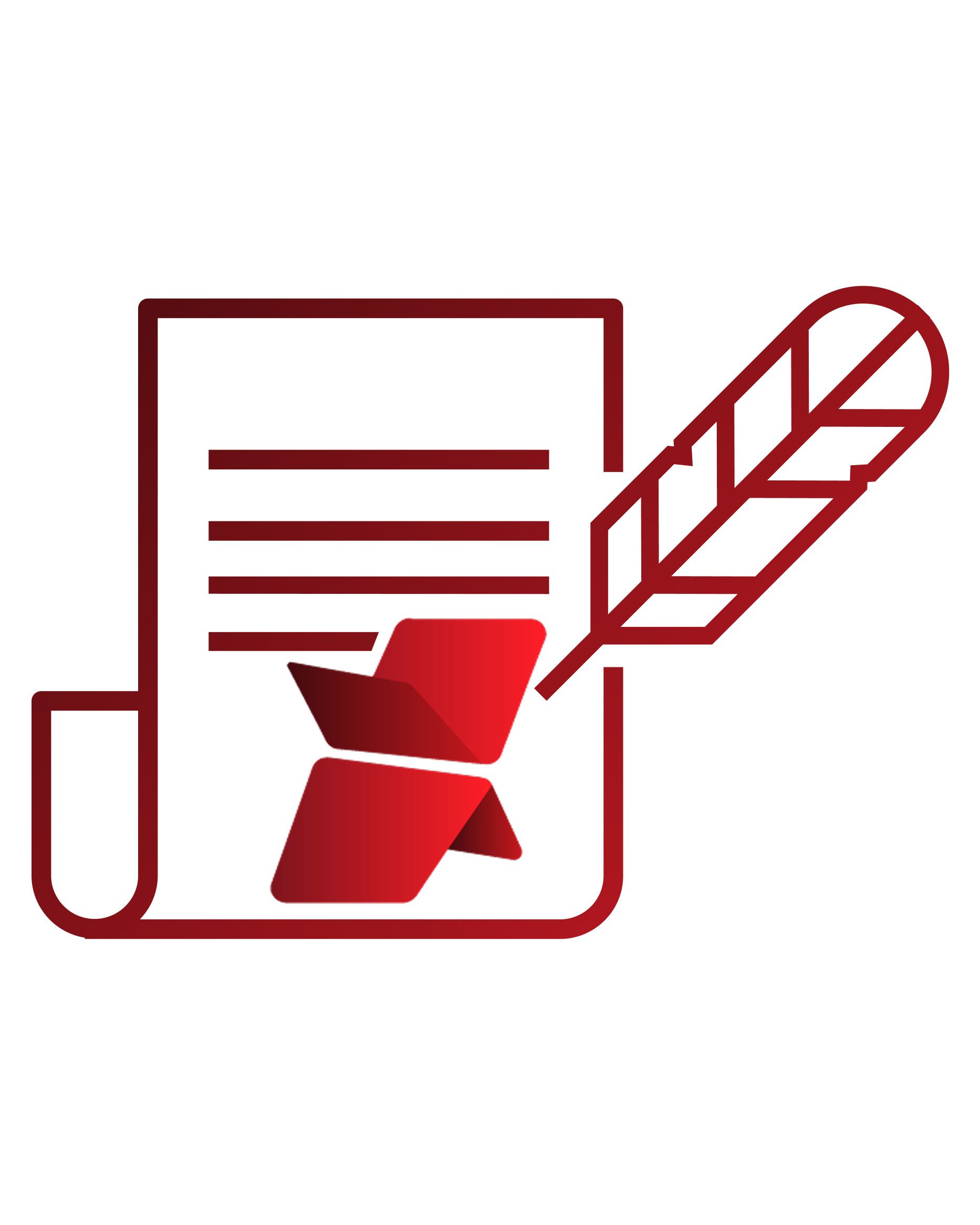Imagine a world where document chaos is a thing of the past. With strategic Document Lifecycle Management (DLM) within Salesforce, you can turn this dream into reality.
But what exactly is Document Lifecycle Management? How can it simplify the Salesforce document generation process to benefit your business? To learn more, please keep reading.
What Is Document Lifecycle Management & How It Works?
Before diving into Document Lifecycle Management, let’s break down what Document Lifecycle is. Simply put, it’s the complete journey of a document, from template setup to document generation, which includes review and approval workflows, obtaining e-signatures, collaboration, and storage. A Document Lifecycle Management tool transforms this process further by automating each stage, ensuring efficiency and accuracy throughout the process.
Regardless of your business type or size, documents are crucial for daily operations and long-term success. A highly automated and simplified process is essential to streamline document generation and management process using a powerful document management app built to work with Salesforce.
Document Management process basically consists of four key stages;
- Template Creation & Management
The most common documents generated in Salesforce are Proposals, Quotes, Contracts, Invoices, and Statement of Work (SOW) etc. These documents are used to outline potential projects to clients (Proposals), estimate prices (Quotes), formalize agreements (Contracts) and ensure clear, agreed-upon project expectations (Statements of Work and Invoices), guiding the entire process from initial proposal to closing the deal.
Templates can either be standardized or customized based on requirements. Once the appropriate template is selected or created, data is pulled from the relevant objects and automatically filled in, ensuring accuracy. Once created, templates can also be reused to save time.
- Review & Approval
Without a review process, the likelihood of processing inefficient documents is high, which could result in miscommunication. It verifies that the reviewed documents are kept spot-on, meet all the standards & policies, and get the green light before they’re finalized.
- E-Signature
For the final use of the document, an authorized signature is essential. This ensures that the document has not been tampered with since approval and confirms that all parties agree to the terms and conditions outlined in the document. An E-Sign simplifies this process by making everything digital, allowing signatures from anywhere, at any time.
- Document Generation
The final step in document lifecycle management is document generation. The reviewed document is merged with the selected template to generate the document’s final version. The generated document is consistent, error-free, and ready for distribution or further processing.
You can either choose to store these generated documents within Salesforce or move them to external cloud storage by leveraging the capabilities of XfilesPro. Visit our website to find out how.
Common Challenges in Document Generation
As businesses embrace digital transformation, they’re on the lookout for automated solutions to streamline their operations. Since document generation is a core part of most business processes, the manual creation of documents comes with its challenges. This process can be prone to human error, leading to inconsistencies between different versions. Some challenges are;
- Programming Requirement
Integrating a third-party document generation tool with Salesforce can be tricky, often needing a lot of coding for template editing, which can make it less user-friendly.
- Risk of Errors
Manual document creation is error-prone due to manual data entry, and copying from various sources. Searching for information can be a tedious task and often results in typos and formatting inconsistencies.
- Difficulty In Scalability
As business expands, the process of manually creating documents becomes more cumbersome and difficult to manage, making it difficult to scale operations efficiently. Individually creating documents daily not only consumes significant resources thereby hindering productivity.
- Document Version Control
Tracking document versions and ensuring the latest is used can be challenging, especially when done manually. After each review and subsequent changes are made, it can be frustrating to verify that all teammates are working on the same document.
- Approval Delays
Since most approvals occur via email, there is a high chance that emails may get lost or individuals might overlook them. This can lead to missed approvals and subsequent delays.
Benefits of a Document Lifecycle Management Tool
A strategic Document Lifecycle Management (DLM) system can transform businesses by automating the entire document management process—from creation and approval to e-signatures and storage. This seamless integration streamlines operations, reducing manual efforts and errors. Key benefits of DLM includes;
- Time-Saving
In the hustle and bustle of modern business, you really can’t underestimate the importance of timing. By leveraging automatic document generation tools, organizations can quickly produce documents, significantly reducing the time required compared to manual processes.
For example, the sales team uses automated quote templates to establish base prices for services. This ensures consistency across all quotes and allows for easy reuse.
As a result, manual document creation time is cut down, enabling the sales team to focus more on what matters most: selling.
- Reduced Risk of Errors
As data is automatically pulled from relevant objects, the risk of errors is significantly reduced. Additionally, incorporating multiple checks from different individuals helps catch mistakes that a single creator might overlook.
For instance, when the sales team reuses a template, a thorough review process ensures that all details are current and correct. Any necessary changes are made during this stage, further minimizing the risk of errors.
- Enhanced Collaboration
Since approval occurs on reviewed documents, it’s crucial to ensure that approval is done on the latest version. Real-time editing and centralized access help make sure everyone is working with the most up-to-date document, so everyone sees the latest version.
This approach boosts collaboration by ensuring that all team members are on the same page, reducing confusion, and streamlining communication, which leads to more effective and coordinated teamwork.
- Streamlined Document Generation Process
With automation tools, organizations can simplify each step, from initial template creation to final e-signature. This approach reduces errors, speeds up workflows, and maintains consistency across all documents. Automation handles routine tasks, freeing up valuable time for teams to focus on more strategic activities.
In summary, using a Document Lifecycle Management tool along with Salesforce changes the way you manage documents, making the whole process easier and more efficient. By automating every stage of the document journey, from creation to storage, you can eliminate errors, save time, and enhance collaboration across your organization.
XfilesPro DocuPrime which is the best document generation application for Salesforce, offers advanced features that automate document generation, streamline real-time review and approval workflows, and provide secured e-signature functionality. All within one single platform.
If you want to see how these capabilities can simplify your document generation process and improve work efficiency, book a demo today and experience the benefits for yourself.



